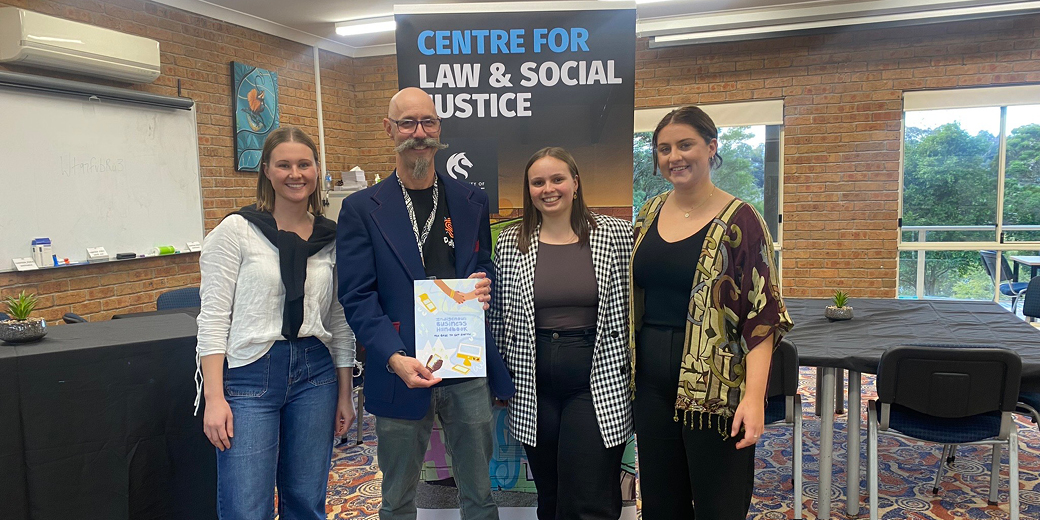Losing a loved one is a difficult time, made even more complex when questions arise about the distribution of their estate and a claim is made. For executors or administrators defending a family provision claim, it is important not to neglect the importance of a Notice of Claim in assisting to efficiently deal with claims.
In this practice update, we will explore recent judicial guidance from Jurak v Latham [2023] NSWSC 1318 regarding Notices of Claim and the role they play in family provision proceedings. Here to guide us through the case is Josephine Pignataro, Special Counsel and Accredited Specialist (Wills & Estates).
Key Summary: Jurak v Latham [2023] NSWSC 1318
“The decision of Meek J in Jurak v Latham [2023] NSWSC 1318 contains recent judicial guidance from the Supreme of New South Wales on the importance of an executor or administrator locating and notifying eligible persons in family provision claims,” Josephine Pignataro explains. “It is an important judgment which speaks to practice and procedure in this jurisdiction.”
In that matter, the Court was asked to make consent orders to finalise a family provision claim.
“When the matter came before the Court, Justice Meek alerted the parties to earlier consent orders made by the Court only a few months earlier in other family provision proceedings concerning the same estate ("the related matter"). The consent orders in the related matter contained a notation that the new claimant's interests could be disregarded because his whereabouts were unknown,” Josephine says.
“However, on the day those orders were made, the solicitor acting for the defendant had received contact from the new claimant seeking information about the deceased's estate. The court was not informed of this contact by the new claimant when the orders in the related matter were made.”
The judgment distinguished Notices of Eligible Person from Notices of Claim.
What is a Notice of Eligible Person?
As Josephine explains: “A Notice of Eligible Person is the Notice, for which there is no prescribed form, which a Plaintiff is required to serve on the administrator showing who, in his or her opinion, is or may be an eligible person (designating as a person under legal incapacity any eligible person who, in his or her opinion, is or may be a person under legal incapacity): subclause 4(1) Schedule J Succession Act 2006 (NSW) ("SA").”
On the other hand, the executor/administrator must serve the Notice of Claim: subclause 4(2) Schedule J SA.
“The Notice of Claim notifies specific categories of people about the Plaintiff's claim and advises them that they must apply to the Court for a share of the estate, if eligible, within a timeframe set by the Succession Act 2006 or determined by the Court,” Josephine says. “Failure to bring the claim as set out in the Notice may result in the Court disregarding their interest in the determination of the application at hand.”
In the judgment, Meek J confirms at [37] that the content of the Notice of Claim is set out in subclause 4(3) Schedule J SA. For practical purposes, the wording is extracted in Schedule 1 of the judgment and is also found in Schedule J of the Supreme Court Rules. Concerning applications under the Succession Act 2006 (for estates where the deceased died on or after 1 March 2009) the wording of the Notice of Claim is as follows:
NOTICE OF CLAIM
The plaintiff has applied to the Court under the Succession Act 2006 for a family provision order in respect of the estate of (name) deceased who died on (date).
If you are entitled to, and wish to apply for, an order for provision for you out of that estate, you must apply within a period prescribed by the Succession Act 2006 or allowed by the Court. If you do not, before the Court deals with the plaintiff’s application, apply for an order for provision for you out of that estate, the Court may deal with the plaintiff’s application without regard to any possible application by you.
Dated—
(signature)
Solicitor for the administrator
(Address for service)
(or as the case may be)
At [36] Meek J refers to subclause 4(2) Schedule J of the Succession Act 2006. That subclause refers to the persons to be served with the Notice of Claim and provides as follows:
(2) The administrator must serve a notice in accordance with subclause (3) on the following:
(a) the surviving spouse (if any) of the deceased person,
(b) every child of the deceased person,
(c) every person not mentioned in paragraph (a) or (b) who is entitled to share in the distributable estate of the deceased person,
(d) any person mentioned by the plaintiff in his or her notice served under subclause (l) and not mentioned in paragraphs (a), (b) or (c),
(e) any other person who, in his or her opinion, is or may be an eligible person.
“Justice Meek determined that there is no prescribed method for how a Notice of Claim should be served. Rather, he referred to the Practice Note in force at the time of the judgment, which is now replaced by Supreme Court Practice Note SC Eq 7. The administrator's affidavit must specify the Notice of Claim’s method of service. This requirement is also outlined in subparagraph 18.10 of the current Practice Note,” Josephine says.
What kind of practical guidance does this case provide?
“The judgment provides practical guidance and assistance to defendant executors/administrators and their legal representatives as to when to serve Notices of Claim and what needs to be included in them,” Josephine says.
“Critically, the judgment also provides practical guidance on the importance of locating eligible persons as well as the lengths that need to be taken to do so.”
At [149] Meek J explained that: “A statement, without more, by a practitioner or an administrator that he or she is unaware of the whereabouts of a potentially eligible person will generally be insufficient to satisfy the Court regarding notification requirements. Generally, the Court expects some attempt at enquiry to locate potentially eligible persons.”
Justice Meek details the types of enquiries that should be undertaken - for example, a search of the electoral roll or a property search.
Drafting an effective notice of claim: Top 3 Tips
Given the guidance of Justice Meek in Jurak v Latham [2023] NSWSC 1318, it is worth considering how you can draft an effective Notice of Claim. Below are Josephine’s top 3 tips.
An effective Notice of Claim will:
- Follow the content of subclause 4(3) Schedule J of the Succession Act 2006.
- Be served on the persons set out in subclause 4(2) Schedule J of the Succession Act 2006.
- At [128] Meek J has explained that there is no specific requirement for personal service in family provision proceedings (see r10.20 UCPR) and at [129] that Notices of Claim "are served in a variety of manners".
- However, at [131] Meek J stated that: “Practitioners are expected to use common sense in light of the purposes which underlie the jurisdiction as to what method of service is appropriate in any given situation."
- Further, at [132]: "The Court has ample power to require a particular method of service to meet notification requirements having regard to the exigencies of each particular case. That clearly includes, in appropriate cases, the Court requiring that personal service be effected."
- Be served as early as possible in the proceedings after receiving the plaintiff's Summons and Notice of Eligible Persons to allow any other claimants to come forward and their claims to be dealt with.
The importance of an effective Notice of Claim
“Understanding the importance of an effective Notice of Claim is to understand the purpose it serves in family provision proceedings,” Josephine says.
In the judgment, Justice Meek set out that a strong Notice of Claim “has an important role in how the Court deals with family provision claims.”
Josephine elaborates on the weight of a Notice of Claim.
"Pursuant to section 61 of the Succession Act 2006, in determining a family provision claim, the Court can disregard the interests of another person who might make a family provision application. However, the Court can only do this if the potential claimant received notice of the application and of the Court's power to disregard their interests. For all intents and purposes, this notice is the Notice of Claim. The notice must be given in accordance with Court rules or regulations unless the Court determines that it is unnecessary, unreasonable, or impracticable to give notice in the circumstances."
This is what makes an effective Notice of Claim so important. It can ensure interests are protected and matters can be dealt with efficiently.
“Practitioners should aim to ensure all family provision claims are determined together,” Josephine says. “This is in line with the overriding purpose of the Civil Procedure Act 2005 (NSW) to provide ‘just, quick, and cheap resolution of the real issues in the proceedings.’
Indeed, Meek J's statement at [67] supports this view:
“Without intending to be exhaustive, it is helpful to corral all potential claims to be dealt with and (in the absence of a settlement) to be heard by the Court together.’”
























![How to handle Direct Speech after Gan v Xie [2023] NSWCA 163](https://images4.cmp.optimizely.com/assets/Lawyer+Up+direct+speech+in+drafting+NSW+legislation+OCT232.jpg/Zz1hNDU4YzQyMjQzNzkxMWVmYjFlNGY2ODk3ZWMxNzE0Mw==)































































